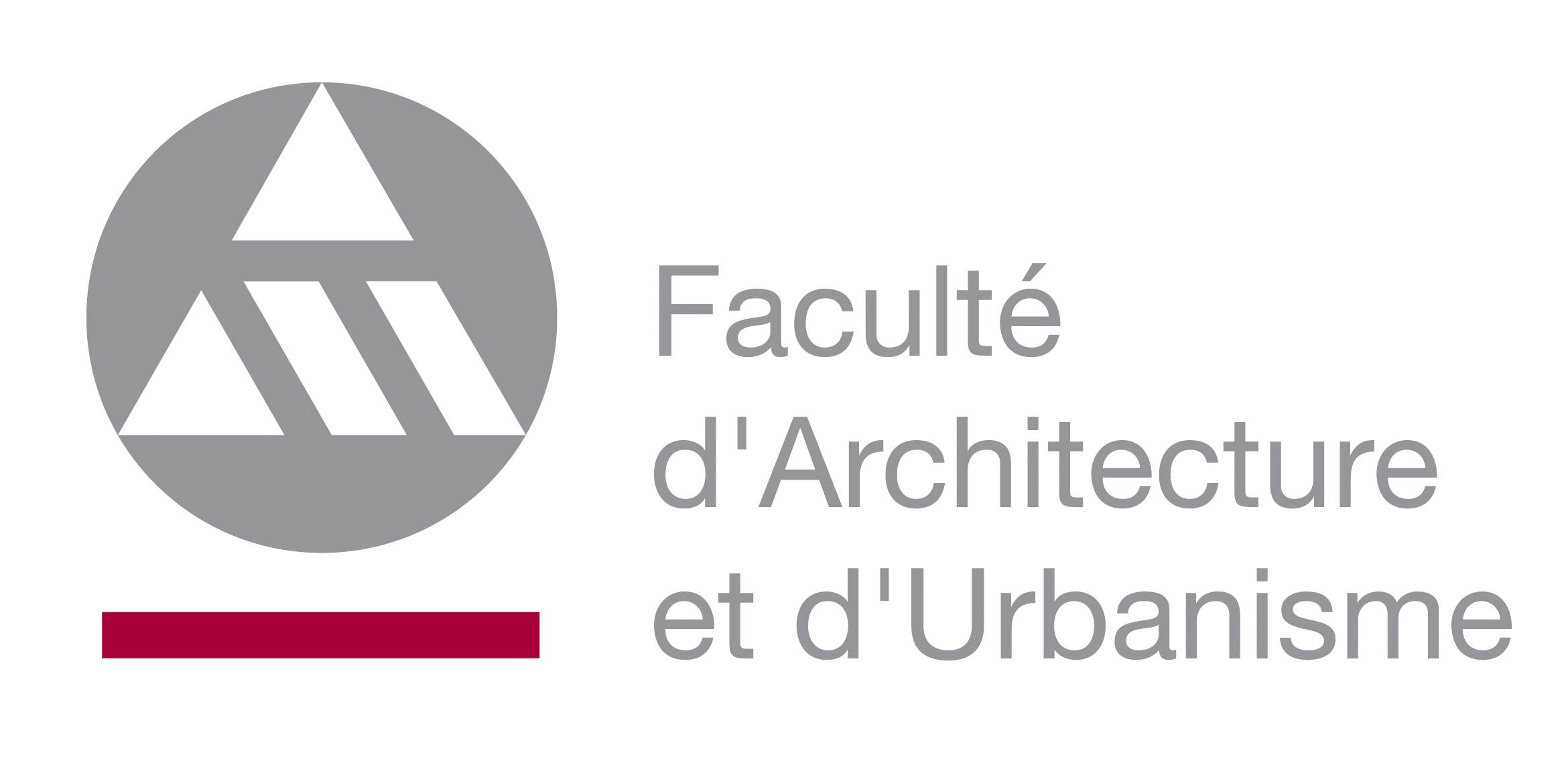 | Study programme 2018-2019 | Français | |
 | History and theory of architecture and urban planning I | ||
Programme component of Bachelor's Degree in Architecture à la Faculty of Architecture and Urban Planning |
| Code | Type | Head of UE | Department’s contact details | Teacher(s) |
|---|---|---|---|---|
| UA-B1-ARCHIT-018-M | Compulsory UE | DEPREZ Anne | A530 - Service d'Architecture et Société |
|
| Language of instruction | Language of assessment | HT(*) | HTPE(*) | HTPS(*) | HR(*) | HD(*) | Credits | Weighting | Term |
|---|---|---|---|---|---|---|---|---|---|
| Français | 18 | 6 | 0 | 6 | 0 | 2 | 2.00 | 1st term |
| AA Code | Teaching Activity (AA) | HT(*) | HTPE(*) | HTPS(*) | HR(*) | HD(*) | Term | Weighting |
|---|---|---|---|---|---|---|---|---|
| A-ARSO-001 | History and Theories of Architecture and Urban Planning I | 18 | 6 | 0 | 6 | 0 | Q1 | 100.00% |
| Programme component |
|---|
Objectives of Programme's Learning Outcomes
- Instruct an architectural issue
- Study the different components of a theme to articulate its findings in a comprehensive summary
- Build an architectural culture based on theoretical and critical knowledge and personal reading
- Coordinate the various disciplines related to architecture and urban planning transversely
- Contextualise their approach to architecture
- Develop a spatial response
- Master the means of oral, written and graphic expression
- Develop a project methodology integrating the various constraints related to the architectural discipline
- Implement an identified spatial response
- Adopt an applied scientific approach
- Adapt their structural, technical and formal choices according to the principles and values of project.
- Interact with all actors
- Master the different means of expression available to the architect to communicate to informed publics, or not
- Develop a professional attitude
- Provide, share and defend their ideas in collective discussion related to governance frameworks.
- Make choices
- Demonstrate ethical values
Learning Outcomes of UE
Lesson makes acquire to the student an architectural culture by the study of case of various programmes, structures, techniques and forms. He develops his faculty to judge as much constructive genius as artistic and cultural by the study of typological invention (of the convenience of usage in space conception), of technical innovation (of tectonic stability in architectural prescription) and creativity in composition and architectural theory (of module and rhythm in plastic beauty). With historical and contextual detachment on significant achievements, the student deepens his critical reflexion on the process of conception and its implementation as well as on the coding of architectural theory and of cultural message.
Content of UE
Mésopotamie: first cities into the brick; Egypt: cult of immortality in the stone; Greece: orders of the temple to democracy; Rome: civil engineering to architecture in concrete
Prior Experience
History courses in the secondary school
Type of Assessment for UE in Q1
- Presentation and/or works
- Oral examination
- Written examination
- Practical test
- Quoted exercices
Q1 UE Assessment Comments
Examination writes according to the visual documents (QCM with reasoned justification, incomplete text and structured and explicative presentation of a major building, analysis compared of two buildings).
Study on the ground relating to a local medieval architectural relic from the tools of analysis of lesson.
Type of Assessment for UE in Q3
- Presentation and/or works
- Oral examination
- Written examination
- Practical Test
- Quoted exercices
Q3 UE Assessment Comments
Examination writes according to the visual documents (QCM with reasoned justification, incomplete text and structured and explicative presentation of a major building, analysis compared of two buildings).
Study on the ground relating to a local medieval architectural relic from the tools of analysis of lesson.
Type of Resit Assessment for UE in Q1 (BAB1)
- Presentation and/or works
- Oral examination
- Written examination
- Practical test
- Quoted exercices
Q1 UE Resit Assessment Comments (BAB1)
Examen écrit d'après les documents visuels (QCM avec justification raisonnée, texte lacunaire et présentation structurée et explicative d'un édifice majeur, analyse comparée de deux édifices).
Etude sur le terrain relatif à un vestige architectural médiéval local à partir des outils d'analyse du cours. Study relating to a local antique architectural relic from the tools of analysis of lesson.
Type of Teaching Activity/Activities
| AA | Type of Teaching Activity/Activities |
|---|---|
| A-ARSO-001 |
|
Mode of delivery
| AA | Mode of delivery |
|---|---|
| A-ARSO-001 |
|
Required Reading
| AA | Required Reading |
|---|---|
| A-ARSO-001 | Note de cours - HISTOIRE ET THEORIES DE L'ARCHITECTURE ET DE L'URBANISME I - Anne DEPREZ |
Required Learning Resources/Tools
| AA | Required Learning Resources/Tools |
|---|---|
| A-ARSO-001 | - Giedion S., L’éternel présent : la naissance de l’architecture, Bruxelles, éd. de la Connaissance, 1966. - Lloyd/H. W. Müller/R. Martin, Architecture de l’Antiquité (Histoire mondiale de l’architecture, dirigée par Pier Luigi Nervi), Paris, Berger-Levrault, 1980. - Norberg-Schulz CH., La signification dans l’architecture occidentale, Sprimont, Mardaga, 1977. |
Recommended Reading
| AA | Recommended Reading |
|---|---|
| A-ARSO-001 |
Recommended Learning Resources/Tools
| AA | Recommended Learning Resources/Tools |
|---|---|
| A-ARSO-001 | - Perouse de Montclos, J.-M., Architecture, méthode et vocabulaire (principes d’analyse scientifique), éd. du Patrimoine (Paris), 2000. - Coll., La grammaire des formes et des styles, Antiquité, Office du Livre, Fribourg, 1981. |
Other Recommended Reading
| AA | Other Recommended Reading |
|---|---|
| A-ARSO-001 | - Norberg-Schulz CH., La signification dans l’architecture occidentale, Mardaga, 1977. |
Grade Deferrals of AAs from one year to the next
| AA | Grade Deferrals of AAs from one year to the next |
|---|---|
| A-ARSO-001 | Unauthorized |